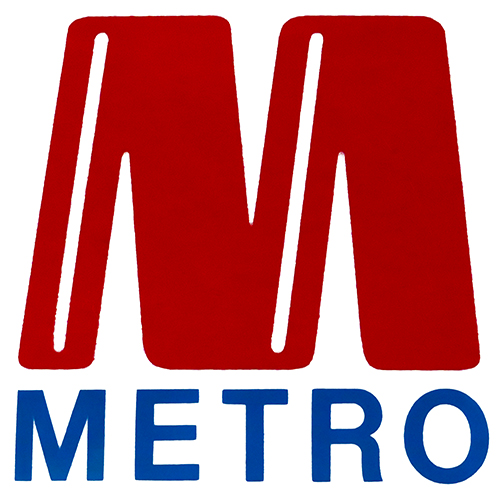Metro Petroleum Ltd was a subsidiary of the A.S. Williams Group, based at Cavendish House in Waterloo, Liverpool*.
A.S. Williams (who later became an alderman) had trained as a mining engineer in South Wales and in 1938 enacted a management buyout of the northern operations of William Morris Ltd, coal merchants. The new A.S. Williams company developed a railway wagon business (later nationalised) and were major coal merchants in NW England, under the name Merseyside Fuel Distributors. They also ran a travel agency (Travelways) and haulage (Cavendish Transport).
Subsequent generations of the Williams family diversified the business into oil, with Sahara Fuel Oils—Conoco heating oil distributors in the north-west since the mid-1960s (and apparently Conoco’s largest authorised distributor at one point), and the Greyhound Oil Company of Bootle, who were VIP distributors and then switched to Chevron (and also sold their own Greyhound brand motor oil).
By the 1980s A.S. Williams was known for sponsoring the A.S. Williams Handicap Chase at Aintree and the Wigan Wasps swimming team, and indeed seem to have raced their own horse called ‘Go Metro’. Presumably Metro, launched around 1981, was a way for the group to move into supplying independent petrol stations under their own brand. By 1983 there were 55 Metro-branded petrol stations across NW England and north Wales, growing to 62 by 1984 including six company-owned sites, although these numbers dropped in 1985 and by 1986 the company was insolvent and compulsorily wound up after a creditors’ petition. Cavendish Transport, Greyhound Oil, and number of other A.S. Williams Group companies had been wound up in 1985.
So, Metro was a short-lived brand—around five years in total. However there were still Metro signs up into the 1990s: Paul Farrow has a photo from 1994 showing a Metro garage next to a Port Petroleum, somewhere on Merseyside https://flickr.com/photos/188083259@N02/52292946716 . The much-photographed ex-NWF garage at Llanrug near Caernarfon was also Metro in the 1980s, going by the logo visible on a pump in 1990 https://www.flickr.com/photos/danlockton/15641759694
One notable Metro site was Hughes Motor Sales, Seaview Filling Station near Llanfairfechan, who signed up with Metro in 1982. The previous owners of the site had left a 40W bulb switched on when they vacated, and the phenomenon of the light still burning at what (presumably) looked like an abandoned garage was apparently sufficient for a passer-by to phone in to the Terry Wogan show on BBC Radio 2 to discuss “the light of Llanfairfechan”. This led to some publicity for the new owners, including John Hughes joking (which Wogan read out own air) that the light was a “beacon for illegal Irish immigrants, to guide them to the landing spot”. Local newspaper photos of the garage once kitted out in Metro branding show a smart forecourt with three pumps. By 1984 Metro Petroleum itself was leasing the petrol sales business from Hughes; the garage was robbed in 1984 with the safe forced open. I don’t know when fuel sales stopped, but the car sales forecourt was replaced by houses between the 2011 and 2021 Streetviews https://maps.app.goo.gl/xRRJ7jDxRnaJqHW86
Metro was fined in 1984 for breaking fire regulations and breaching their fuel storage licence conditions at Buckley Service Station (now Texaco https://maps.app.goo.gl/3F6LTHs9iaeMhpNX6 ), one of their company-owned sites at Buckley near Mold, with local residents reporting a strong petrol smell coming up through their floorboards from a leaking tank.
Surviving Metro globes I’ve seen for sale at auction or online show at least three different designs, perhaps suggesting re-liveried globes from other brands. There is the trapezoidal shape as in Chris’s photo, an oval shape (ex-Esso?), and a pentagon shape which looks very much like a Globe globe. The logo sometimes appeared with a blue border.
*The building is now Vision Cruise — previous occupier Liverpool Cruise Club seems to have re-used what looks like an ex-Metro lightbox sign for their logo, still visible in the 2009 Streetview. Cavendish House had been a dairy, then was bought by A.S. Williams in 1938. Used by the civil defence authorities during the war, the building was refurbished and extended by A.S. Williams in the late 1940s.
https://maps.app.goo.gl/Gw84vzE5SZ17bwJH6
Doing a bit more research this morning I found out that Metro was set up by A.S. Williams Holdings partially as a consequence of—following Conoco’s takeover of Globe—the opportunity arising to supply smaller sites across the north including ex-Globe sites abandoned by Conoco. Metro was formed in October 1980 by a set of ex-Globe staff including Cyril Runacres as managing director. The aim was to supply garages right across to the east coast (though I don’t know if they got that far). There were two Metro sites in Cumbria.
It appears that Cyril Runacres also ran Metro Travel (possibly using the same logo?) which survived and developed into the Liverpool Cruise Club and now Vision Cruise, run by his son Andrew.

